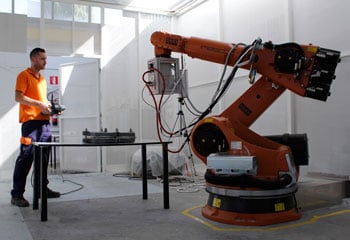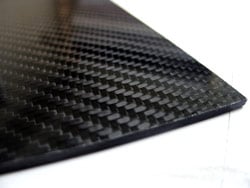New manufacturing system of plastic parts reinforced with more environmentally-friendly and economic carbon fibres

 Composite components must be cured under very strict processing conditions due to the need of having a reproducible polymerisation of the resin.
Composite components must be cured under very strict processing conditions due to the need of having a reproducible polymerisation of the resin.
Currently, polyester, vinylester and epoxy resins are cured by heat, ultraviolet radiation or electron beam. The thermal process is the most common in this sector. The use of microwave radiation as a new curing technology for polyester, vinylester and epoxy resins adapted to RTM process can obtain two important effects: volumetric heating and separation between filling and curing steps.
Therefore, the main objectives of the use of microwave curing in RTM process are: reduction of curing time, reduction of styrene emission and manual work, optimization of resin polymerization, reduction the production cycle time, increasing the productivity and costs efficiency, decrease energy consumption and lower styrene emissions.
In contrast to conventional thermal system, the main mechanism of microwave absorption in a polymer is the reorientation of dipoles in the imposed electric field; the energy is dissipated like heating due to dipole movement. Energy is transmitted volumetrically, so temperature gradients are reduced and it is possible an internal – external curing.
In order to improve the interaction between microwaves and resin, dielectric additives can be employed.
WAVECOM project
AIMPLAS has developed, within the project WAVECOM, a new manufacturing system of plastic parts reinforced with more environmentally-friendly and economic carbon fibres.
In this process, it has been successfully implemented an innovative microwave technology alternative to the traditional production by means of ovens and autoclaves, so that it has been achieved to reduce by half the manufacturing time and up to 70 % the energy consumption. By means of microwave curing, VOC emissions can be reduced in an 80 % during the production of parts compared to other open-mould traditional processes.
The research, funded by the Seventh Framework Programme and coordinated by AIMPLAS, has consisted of a comprehensive development, from selecting additives to validating the pilot plant system.

The stages of the project have been:
- Selection of proper susceptors to improve the absorption of microwave radiation, thus reducing resin’s heating time.
- Assessment of residual stresses and distortion during microwave curing of epoxy-based composite materials reinforced with carbon by using Fibre Bragg Grating (FBG).
- Automation and implementation of microwave curing technology by a robotic system.
- Development and adjustment of moulds depending on the type of antenna installed.
- Economic and environmental assessment of microwave curing of epoxy-based composite materials rein


